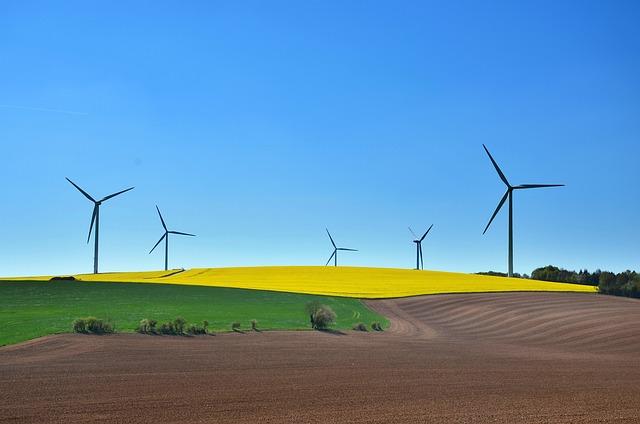In teh ever-evolving landscape of fashion, where trends flicker and fade like city lights, Reformation has emerged as a beacon of sustainability—an emblem of eco-consciousness woven seamlessly into the fabric of contemporary style. Marketed as a champion of the planet, the brand captivates with its chic designs and promises of a greener tomorrow. Yet, beneath the sheen of captivating campaigns lies an intricate web of practices and principles that warrant closer examination. As consumers increasingly seek to align their purchases with their values, the question arises: how lasting is Reformation really? this journey invites us to peel back the layers of marketing rhetoric and explore the core of the brand’s environmental ethos, examining both its triumphs and its shortcomings. Join us as we unravel the true story of sustainability at Reformation,seeking clarity amid the buzz.
Assessing the Environmental Impact of Reformation’s Supply chain
The environmental impact of a supply chain is a crucial determinant of a brand’s sustainability credentials. In the case of Reformation, the company has taken notable measures to ensure its operations are more eco-friendly. They prioritize sustainable materials, sourcing fabrics that have a lower environmental footprint, such as Tencel and recycled polyester. However, the extent of their impact can be further scrutinized through a detailed look at their entire supply chain operations. Factors such as transportation emissions, factory conditions, and energy consumption play a notable role in the overall sustainability equation.
Moreover,Reformation frequently shares transparency reports that reveal their initiatives and progress. Yet, it’s essential to explore the other side of the coin. The brand’s reliance on overseas manufacturing brings up critical issues concerning labor practices and carbon emissions associated with shipping. To illustrate this point, consider the following table that compares different aspects of the supply chain that can impact the environmental load:
| supply Chain Aspect | Environmental Impact | Reformation’s Approach |
|---|---|---|
| Fabric sourcing | Can contribute to deforestation and chemical pollution | Utilizes sustainable and recycled materials |
| Transport Method | Fossil fuel consumption and emissions | Prioritizes shipping methods that lower carbon footprint |
| Manufacturing Practices | Resource-intensive processes | invests in eco-friendly technology in factories |

Evaluating Material Sourcing: Innovation or Greenwashing?
As consumers become increasingly aware of environmental issues, brands are called to the mat for their sourcing transparency. Reformation, known for its eco-friendly apparel, presents itself as a pioneer of sustainability, but is this commitment merely a veneer? Evaluating the authenticity behind their sourcing requires delving deeper than catchy marketing slogans. It’s essential to consider both the methods and materials that fuel their production lines, and also the supply chain practices that accompany them. While Reformation touts its use of recycled materials and responsibly sourced fabrics, questions arise regarding the scope and impact of their sustainable practices in the broader context of the fashion industry.
To dissect the substance of Reformation’s claims, one must look at key metrics that signify genuine sustainability versus potential greenwashing. Metrics to consider include:
- Material Origins: Are the sourced materials truly sustainable,or are they just marketed in this very way?
- Supply Chain Transparency: How clear are the brand’s relationships with its suppliers and manufacturers?
- Impact Assessments: Does the company conduct environmental impact assessments to measure their ecological footprint?
The sustainability narrative becomes clearer when we analyze pertinent data around their practices. Below is a simplified overview of Reformation’s sourcing approach:
| Material | Source & Impact | Recycled Content |
|---|---|---|
| Organic Cotton | Farmed without synthetic pesticides | 100% |
| Recycled Polyester | Made from post-consumer plastic | 30% |
| Tencel | Sourced from sustainable eucalyptus trees | 50% |

Transparency in Labor Practices: Unpacking Ethical Manufacturing
Understanding ethical manufacturing goes beyond just looking at a brand’s glowing marketing campaigns. For companies like Reformation, transparency in labor practices is crucial for establishing genuine trust and loyalty among consumers. While the brand ofen highlights its commitment to sustainability, it is essential to delve deeper into the actual conditions of the workers involved in the production process. Key considerations include:
- Fair wages: Are workers compensated fairly relative to the local cost of living?
- Working conditions: Are employees provided with safe and healthy work environments?
- Labor rights: Does the company uphold the right to unionize and advocate for better working conditions?
- Supply chain transparency: Can the brand trace its materials back to ethical sources?
Examining these aspects can reveal a clearer picture of whether a brand deserves its reputation as an ethical leader in the fashion industry.As an example, an evaluation of working conditions can be best illustrated through the following table:
| Factor | Status |
|---|---|
| Worker compensation | 75% paid above minimum wage |
| Health & Safety Measures | Regular safety audits conducted |
| Employee Benefits | Health insurance & paid leave |
| Supplier Compliance | 50% of suppliers certified |
This analysis provides a more nuanced insight into reformation’s actual practices, prompting consumers to ask essential questions about what ethical manufacturing truly entails in a globalized economy. Only through a combined effort of consumer awareness and corporate duty can we drive meaningful change in the industry’s labor practices.

Consumer Responsibility: Making Informed Choices in Sustainable Fashion
When it comes to sustainable fashion, understanding the full scope of a brand’s impact is crucial for making informed choices. reformation markets itself as a leader in eco-friendly clothing, but consumers must delve deeper than the appealing aesthetics and marketing buzzwords. Transparency should be your guiding principle; investigate how materials are sourced and the company’s labor practices. Options like recycled fabrics and sustainable materials are commendable, but the entire production lifecycle—from production to final shipment—also plays a pivotal role in the overall sustainability picture.
Moreover, consider the social implications of your purchasing decisions. It is vital to assess how well a brand treats its workers and the communities it operates in. By focusing on factors such as fair labor practices and ethical manufacturing,you elevate your responsibility as a consumer. Here’s a brief overview to help compare brands effectively:
| Brand | Material Transparency | Labor Practices | Environmental Impact |
|---|---|---|---|
| Reformation | High | Mixed reviews | Focus on eco-friendly fabrics |
| Brand A | Medium | Good | Recycled materials used |
| Brand B | Low | Poor | Conventional practices |
Make it a habit to research beyond superficial narratives to ensure your fashion choices align with your values. Consumer engagement is not just about the purchase; it extends to demanding accountability and backing companies that promote real change in the fashion industry.
Final Thoughts
As we peel back the layers of Reformation’s carefully curated image, it becomes clear that the journey toward sustainability is neither linear nor flawless. While the brand has made commendable strides in championing eco-friendly practices and raising awareness about the fashion industry’s impact on the environment,it is essential to approach these claims with a critical eye. The allure of green marketing can sometimes overshadow the complexities and challenges inherent in sustainable fashion.
Ultimately, the question remains: how sustainable is Reformation really? It’s a nuanced discussion that invites both praise and skepticism. As consumers,we hold the power to demand transparency and accountability from the brands we support. By continuing to educate ourselves about sustainability and asking the right questions, we can contribute to a more informed dialog about the future of fashion. the path to sustainability is a shared journey—one that requires not just brand commitments but also an active and engaged consumer base.








Leave feedback about this